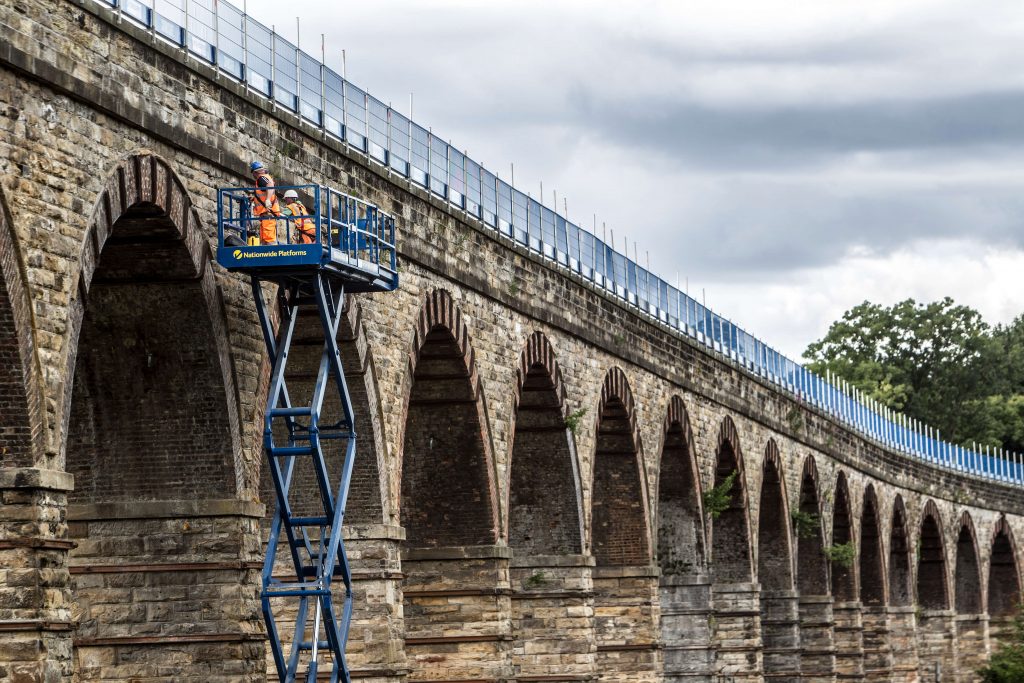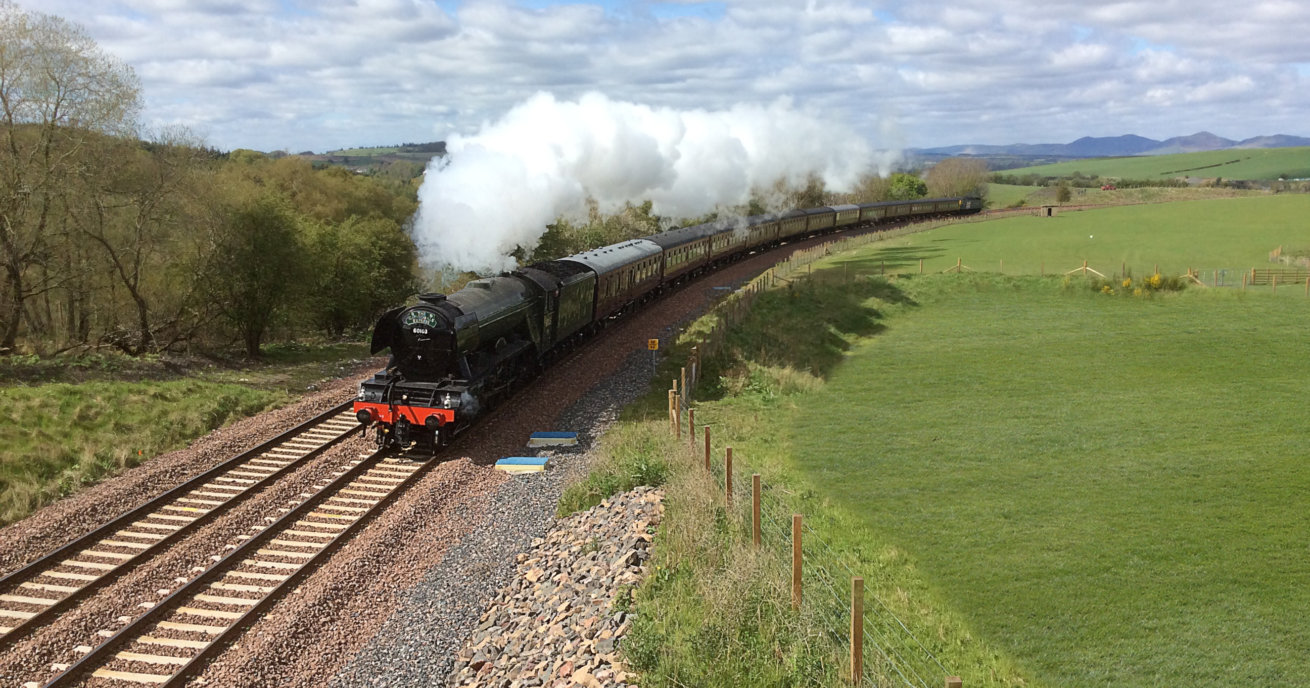When the Borders Railway opened in 2015 it reconnected local communities with Scotland’s capital by rail for the first time since 1969.
The 30-mile route – the UK’s longest new domestic line in more than 100 years – reversed a controversial closure that had left “a profound sense of sadness” in its wake, according to Bruce Ball, author of The Spirit of the Borders Railway.
Four years on, passengers have made millions of journeys on the successor to the Waverley Route, according to the Borders Railway.
The scenic line takes passengers between Tweedbank and Edinburgh in less than an hour. The Borders Railway describes direct transport links as integral to tourism in Scotland, linking the south east of Scotland with rail and air travel across Britain.
Click on the gallery to see the Borders Railway under construction
Bruce said the Waverley Route’s closure almost 50 years ago had had a huge impact on those who lived along the line.
He said: “Myself, like a lot of people, never believed it would actually come back… There was something important that had been taken away from them. It’s just so inspiring… it was so good to see the thing coming back together again.”
He added: “[The railway] has got something special about it. It’s because it joins two nations, it joins this connectivity between Scotland and England and it was broken… It was amazing how one day these towns were linked to the capital and the next day they had nothing.”
The original Waverley Route from Edinburgh to Hawick opened in 1849, providing direct services between Edinburgh, the Borders, Yorkshire and then to London for 107 years.
In the 1960s, it became a victim of Doctor Richard Beeching’s recommendations for railway line closures across Britain. The government planned to reduce the cost of running the railway as road traffic increased.
The closure came despite an estimated 500,000 passenger journeys and more than 50,000 tonnes of freight on the Waverley Route each week, according to the Borders Railway.
Click on the gallery to see the Borders Railway under construction
Bruce lives in Roslin, Midlothian, about seven miles south of Edinburgh. He spent years walking along the disused railway line.
He said: “When I first set foot on the old railway route, it had just been lifted. It was amazing that it was on a mainline because it was so wide. There was this wrongness, the railway being removed.”
Bruce published his book in May last year, having built a large personal collection of photographs of the line. It records the Borders Railway before, during and after its construction, and features a series of stories.
He said: “I just regret I didn’t take any more pictures at the beginning. I walked up and down it regularly simply because the earthworks are so prominent. It’s a mainline, it’s not like a rural line that twists to the contours.
“I remember coming out, having had a tour of [Borthwick Castle in Midlothian] at 10 o’clock at night. [The line] just looked like it had never gone away. That was the reason why I walked up and down it and taking photographs more often.”
Photo credit – Bruce Ball. Bruce and Louise on the first services on the Borders Railway in 2015, the Borders Railway weaves through the landscape and track laying in Borthwick.
The Borders Railway project included seven new stations – Shawfair, Eskbank, Newtongrange, Gorebridge, Stow, Galashiels and Tweedbank.
More than 10,000 new homes and 150 hectares of land for commercial use are set to be built near the railway corridor. Meanwhile, the Borders Railway said an additional 32,300 jobs would be created in Edinburgh between 2012 and 2030 with a further 3,000 in Midlothian and 1,900 in the Borders.
Michael Matheson, Cabinet Secretary for Transport, Infrastructure and Connectivity, said in a Borders Railway statement: “The ongoing increase in passenger numbers since it opened three years ago demonstrates it is acting as a catalyst for investment while opening up employment, leisure and education opportunities for communities along its length.”
Alex Hynes, managing director of ScotRail Alliance, said in a statement in September: “The Borders Railway continues to provide a strong and reliable transport connection, benefiting employment, leisure, tourism, and business.
“We are committed to building the best railway Scotland has ever had and this line is helping us to deliver that, transforming the way people across Midlothian and the Borders travel.”
Like Bruce and his wife Louise, and rail campaigner Madge Elliot were among the first passengers on the reopened line, according to ScotRail.
Madge, born in Hawick in the Borders in 1928, is known for her efforts to save the Waverley Route. She had led a petition to keep the line and with her son Kim hand delivered it to Prime Minister Harold Wilson on 18 December 1968. Unfortunately, the line closed just weeks later. Undeterred, Madge later helped establish the Campaign for Borders Rail, which lobbied for the return of rail services in the area.
Kim said at the time of the reopening: “Experiencing the route first-hand is something we’ve all been looking forward to since the Borders Railway deal was concluded in 2012, and it’s great to see my mother being honoured for the role she played in the re-opening of the line.”

Bruce has a personal connection with the line, having tried to propose to Louise on the Lothianbridge in 1987. A fence got in the way and they got engaged in the next village. More than 25 years later, Craig Bowman, a senior communications manager at Network Rail, secured special permission for Bruce and Louise to walk along the viaduct.
Bruce’s excitement about the Borders Railway hasn’t waned since its opening. He said: “It does have a special atmosphere when we’re on that train. I got a golden ticket because I was there on the first day. That almost festive atmosphere seems to have stayed with the line.”
Header image by Bruce Ball




